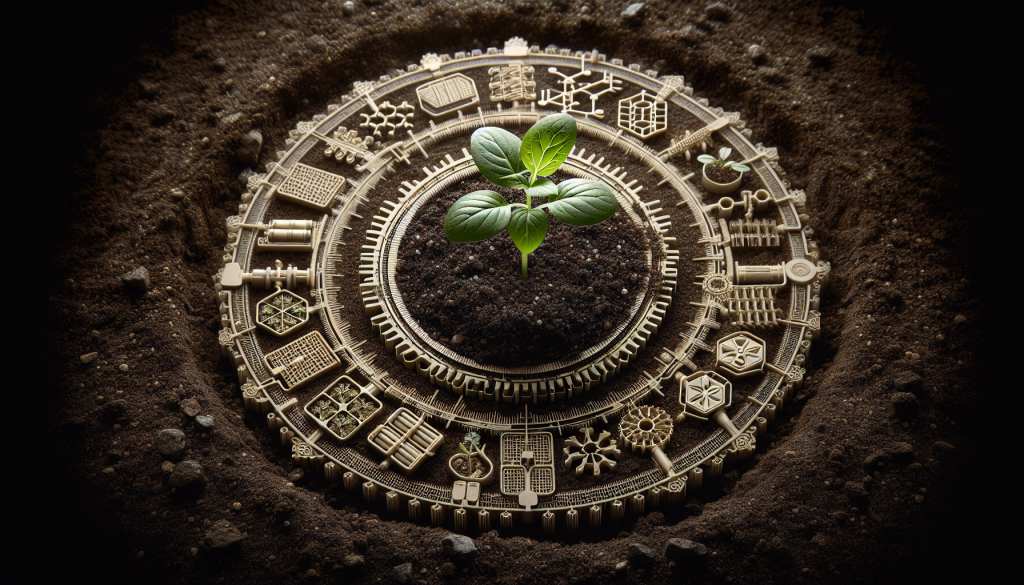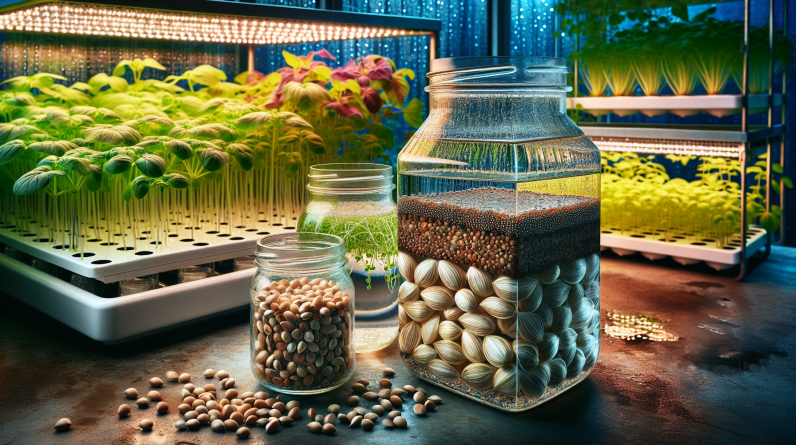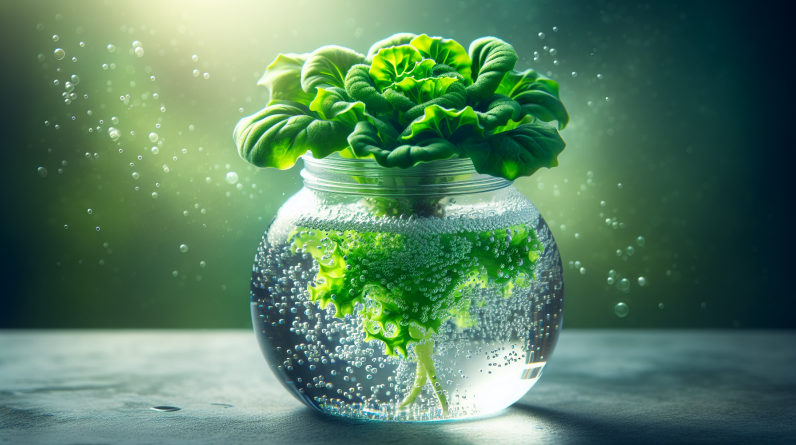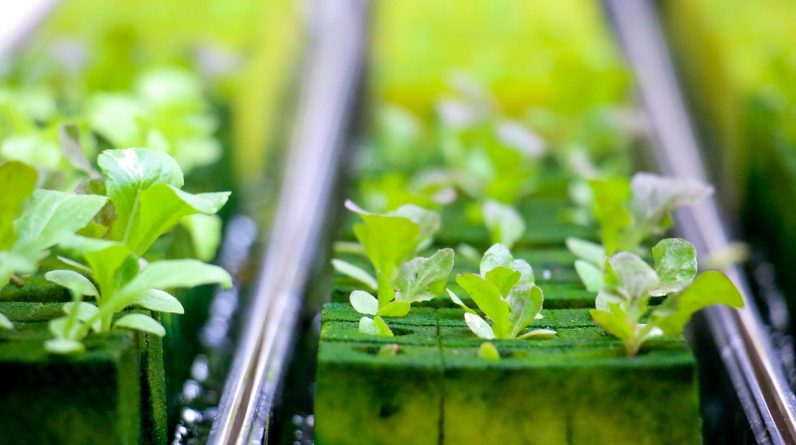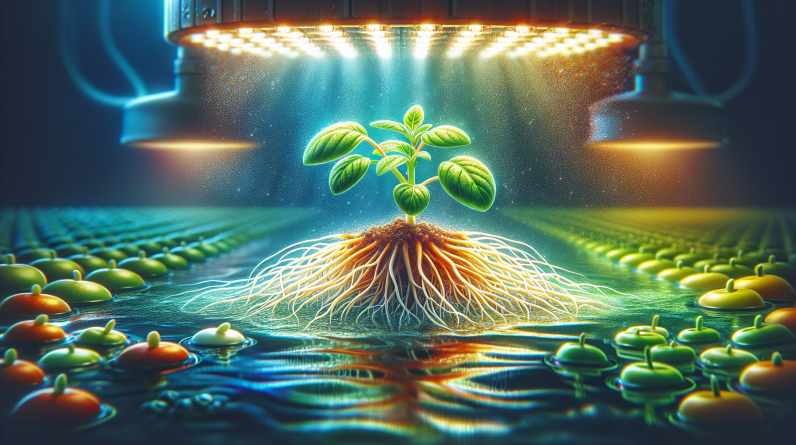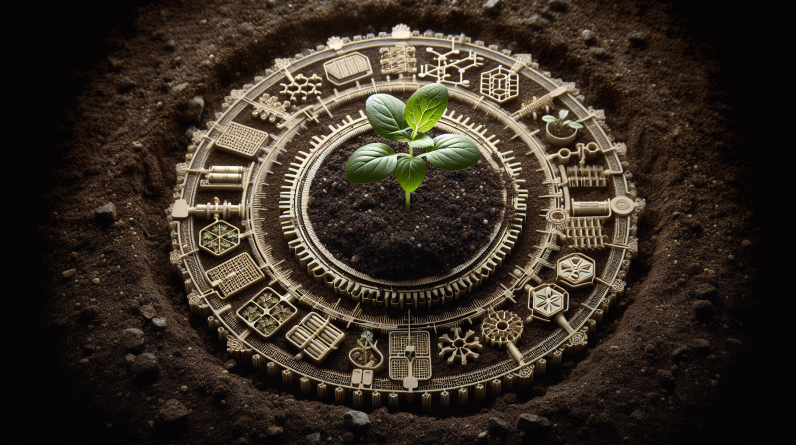
Imagine a world where hydroponic seedlings, thriving with nutrients and water in their carefully controlled environment, suddenly found themselves faced with a new challenge: being transplanted into soil. This seemingly unconventional concept is a topic that sparks curiosity and intrigue. Can hydroponic seedlings truly be planted in soil, and if so, what would be the result? Let’s explore this idea further and uncover the possibilities that lie in merging two distinct growing methods.
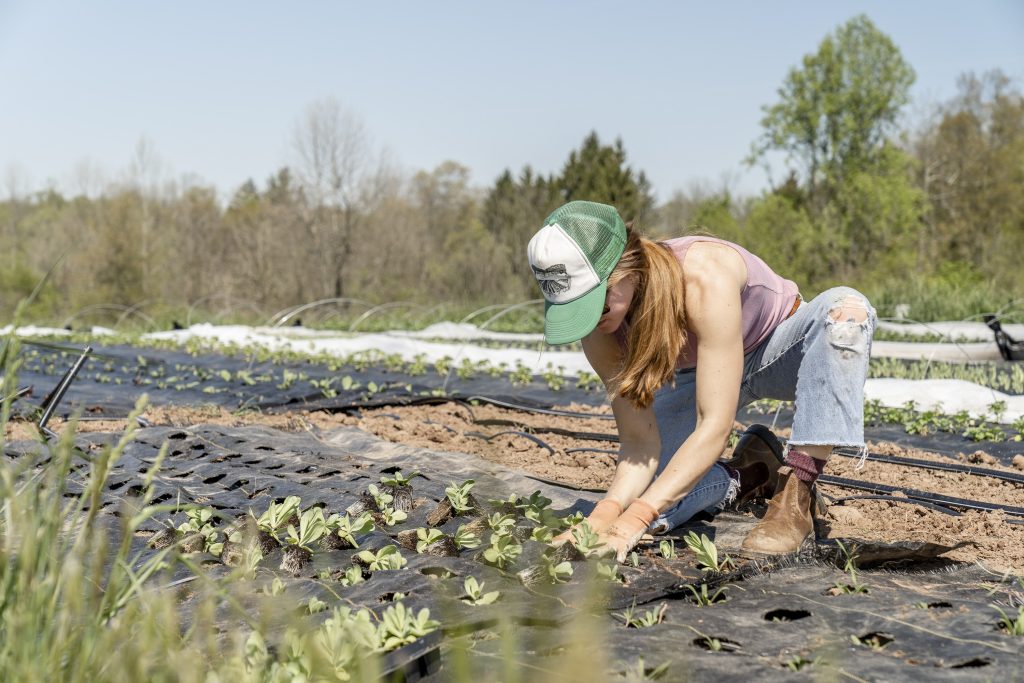
This image is property of images.unsplash.com.
Benefits and Challenges of Hydroponic Seedlings
Efficient Use of Resources
Hydroponic seedlings are known for their efficient use of resources. Unlike traditional soil-based gardening, hydroponics requires less water because it recirculates the nutrient-rich water through the system. This not only conserves water but also reduces the amount of fertilizer needed, making it an environmentally friendly option. Additionally, hydroponic systems can be set up vertically, allowing for more plants to be grown in smaller spaces, maximizing the use of available land.
Control over Growing Conditions
One of the significant advantages of hydroponics is the level of control it offers over growing conditions. With soil-based gardening, you are limited by the natural environment, which can vary greatly depending on factors like weather, soil quality, and pests. In hydroponics, you have complete control over factors such as nutrient levels, pH balance, temperature, and humidity. This precision control ensures optimal growing conditions, resulting in healthier and more vigorous seedlings.
Reduced Need for Pesticides
Another benefit of hydroponic seedlings is the reduced need for pesticides. Since hydroponic systems are generally set up indoors or in controlled environments, pests and diseases have limited access to the plants. Without the need for chemical pesticides, hydroponic seedlings offer a more natural and organic growing method. This not only benefits your health but also creates a safer and more sustainable food production system.
Challenges of Hydroponics
While hydroponics offer numerous benefits, there are also some challenges associated with this growing method. The initial setup cost of a hydroponic system can be higher compared to traditional soil-based gardening. Additionally, maintaining the system requires regular monitoring and adjustments to ensure the right nutrient levels, pH balance, and environmental conditions, which can be time-consuming. Lastly, power outages or equipment failures can be a significant risk in hydroponics, as the plants rely on a continuous supply of water, light, and ventilation.
Understanding Hydroponic Seedlings
Definition of Hydroponics
Hydroponics is a method of growing plants without soil, where the plants receive their nutrients from a nutrient-rich water solution. Instead of traditional soil, a combination of alternative growth mediums such as perlite, vermiculite, coco coir, rockwool, or even air is used to support the growth of plants. The nutrient solution is delivered directly to the plant roots, ensuring efficient absorption and plant growth.
How Hydroponic Seedlings Are Grown
Hydroponic seedlings are typically grown in a controlled environment, such as a greenhouse or indoor growing facility. The seeds are started in a hydroponic system, where they receive all the necessary nutrients, water, and light to promote healthy growth. Hydroponic systems can vary in design and complexity, from simple passive systems to more advanced setups using pumps, timers, and monitoring sensors. The seedlings are carefully monitored and adjustments are made to ensure optimum growing conditions until they are ready to be transplanted or harvested.
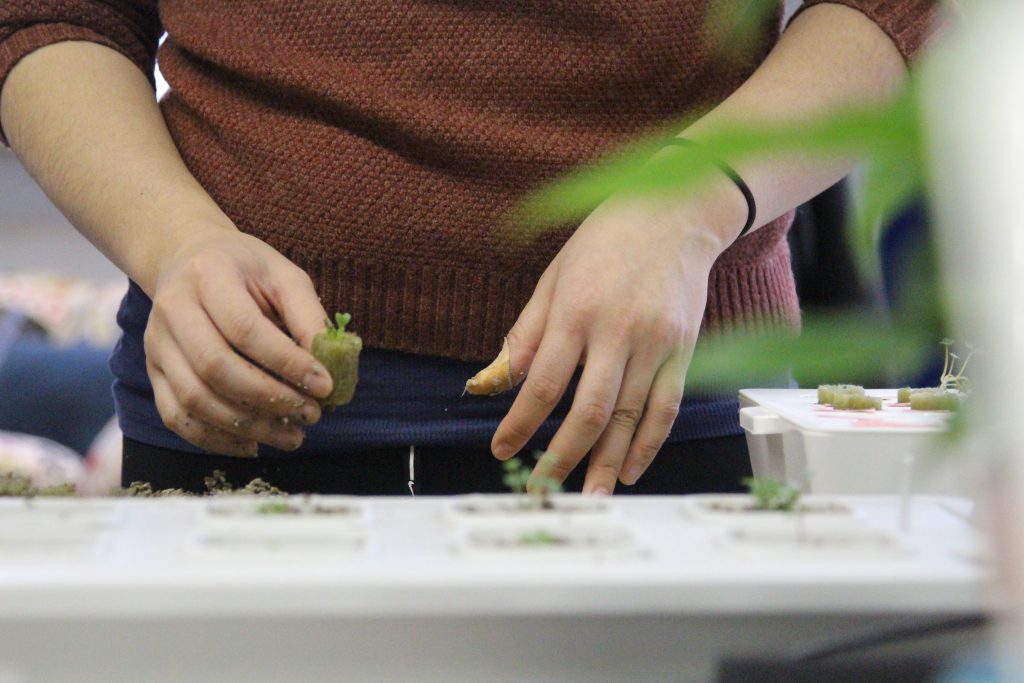
This image is property of images.unsplash.com.
Transitioning Hydroponic Seedlings to Soil
Can Hydroponic Seedlings be Planted in Soil?
Yes, hydroponic seedlings can be successfully transplanted into soil. However, it is essential to follow specific steps and considerations to ensure their successful transition. It is important to note that hydroponic seedlings may require some acclimation before being planted in soil, as they have been accustomed to a controlled environment without exposure to natural soil microorganisms.
Considerations Before Transitioning
Before transitioning hydroponic seedlings to soil, consider factors such as light intensity, humidity, temperature, and nutrient levels. Gradual exposure to these conditions will help the seedlings adapt to the changes and minimize the risk of transplant shock. It is also crucial to choose the right time for transplantation, ensuring that the seedlings are strong and mature enough to withstand the transition.
Preparing Seedlings for Soil
To prepare hydroponic seedlings for soil, start by gradually reducing the intensity of light and decreasing the humidity levels in your growing environment. This mimics the natural conditions that the seedlings will encounter in soil. Additionally, consider gradually reducing the amount of nutrient solution provided, as the seedlings will now need to rely on soil nutrients. This gradual adjustment allows the seedlings to adapt to the new conditions gradually.
Steps for Transplanting Hydroponic Seedlings
- Prepare the soil: Ensure that the soil is well-draining and properly amended with organic matter. This will provide a favorable environment for the seedlings to establish their roots.
- Carefully remove the seedlings from the hydroponic system: Gently remove the seedlings from their hydroponic medium, taking care not to damage their delicate roots.
- Rinse the roots: Gently rinse the roots of the seedlings to remove any clinging hydroponic growing medium. This will prevent any potential buildup or obstruction in the soil.
- Dig holes in the soil: Dig holes in the prepared soil that are large enough to accommodate the roots of the seedlings.
- Place the seedlings in the holes: Carefully place the seedlings in the holes, ensuring that the roots are adequately spread out and covered with soil.
- Water thoroughly: After planting, water the seedlings thoroughly to help settle the soil and provide moisture for the roots to establish.
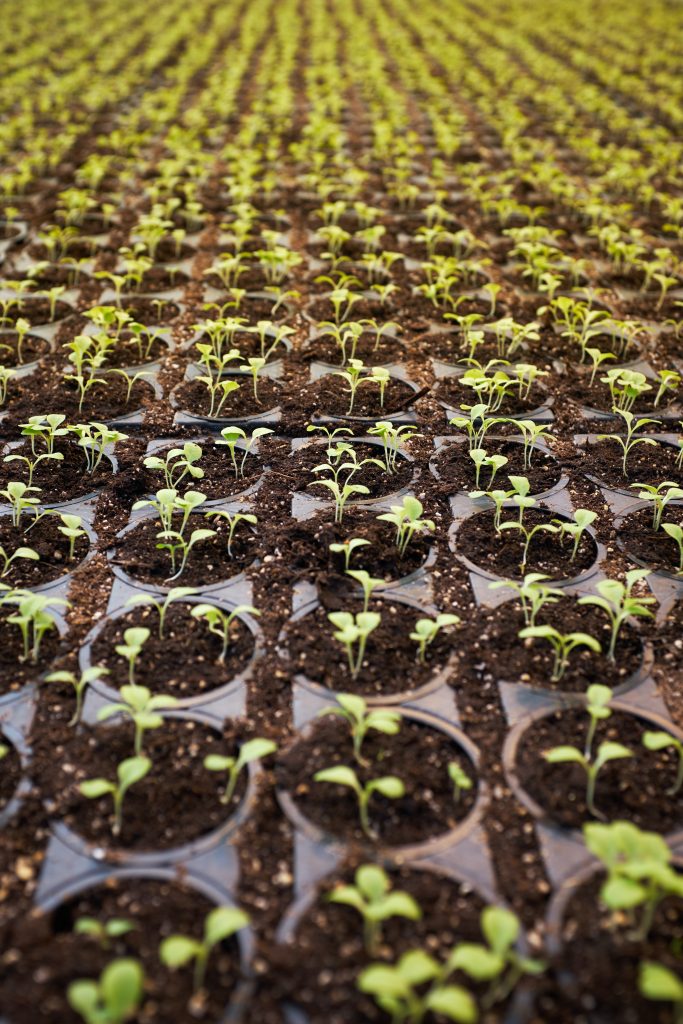
This image is property of images.unsplash.com.
Tips and Best Practices for Transplanting
Choose Appropriate Soil
When transplanting hydroponic seedlings to soil, it is crucial to choose the appropriate soil. Opt for a well-draining soil mix that is rich in organic matter. This will provide the necessary nutrients and support for healthy root development. Avoid heavy clay soils that can retain water and potentially suffocate the roots.
Gradual Transition
To minimize transplant shock, it is important to make the transition from hydroponics to soil gradually. This involves gradually exposing the seedlings to the natural environment, adjusting lighting, humidity levels, and nutrient supply over a period of time. Gradual transitions allow the seedlings to adapt to the new conditions without experiencing a severe shock.
Correct Planting Depth
When transplanting hydroponic seedlings to soil, it is crucial to plant them at the correct depth. Planting too deep can suffocate the roots, while planting too shallow can expose the roots to excessive heat and dryness. Follow the recommended planting depth for each specific plant variety to ensure proper establishment and growth.
Proper Watering
Water is essential for the successful transition of hydroponic seedlings to soil. Maintain consistent and adequate moisture levels without overwatering. The soil should be kept moist but not waterlogged. Monitor the soil moisture regularly and adjust watering frequency based on the needs of the specific plant variety.
Keep an Eye on Transplanted Seedlings
After transplanting hydroponic seedlings to soil, closely monitor their progress. Look for signs of stress or nutrient deficiencies, and take appropriate actions to address any issues. Regularly check the soil moisture, nutrient levels, and general health of the seedlings. With proper care and attention, hydroponic seedlings can successfully adapt to soil and thrive in their new environment.
In conclusion, hydroponic seedlings offer numerous benefits, such as efficient resource utilization, control over growing conditions, and reduced reliance on pesticides. While there are challenges associated with hydroponics, such as setup costs and maintenance, the ability to transplant hydroponic seedlings to soil provides an opportunity for growers to expand their gardening practices. By following the recommended steps and best practices, hydroponic seedlings can successfully adapt to soil, allowing for a seamless transition from hydroponic systems to traditional soil-based gardening methods.
